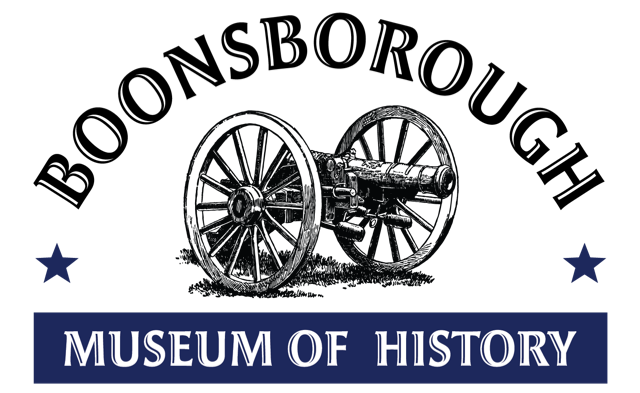Soldier’s Letter:
September 1864 “…if ever a man needed something worth wile to eat to keep up the awful drain on their physical and mental powers, we were given something that ordinarily people at home would hardly have served to their pigs. The hard tack was filled full of little black bugs, which gave the crackers a peculiar flavor. The fifty-pound boxes were branded, or marked B.C. (Brigade Commissary) but the boys declared that it meant that the hard tack was made Before Christ came on this earth” (Letter written by Private H.W. Burlingame, second division, First Army Corps of the Potomac to his children dealing with his experiences at Antietam.)
The Boonsborough Museum of History’s late founder, Doug Bast acquired a piece of hard tack that is on display in our museum. The cracker-like three-inch square was made of flour, salt and water and was far from a popular food among the soldiers. It was used as a staple ration made by soldiers on both sides during the Civil War during marches and winter camps.
Hardtack in Marching Rations:
The Union army had two types of rations: Marching rations and camp rations. Marching rations consisted of a hard bread known as “hard tack”; twelve ounces of salt pork, which was cured pork belly that wasn’t smoked; or 20 ounces of fresh meat; sugar, coffee and salt. Two or three crackers of hard tack fulfilled the daily ration for hard bread. Think about it. If the accounts are true that an average march was between 8-13 miles in one day, (unless the soldiers were pursuing the enemy or retreating from it) the tiny ration of hard bread seems hardly enough even in combination with the meat and coffee (if they were lucky enough to even have them) to provide the energy a soldier needed to flee or fight.
Role of the Quartermaster in Making Hard Tack:
A regime’s quartermaster was responsible for getting the ingredients such as flour and salt, needed by the troops to make hard tack. Quartermasters not only oversaw the acquisition of vast tonnages of food for both men and animals, but also for securing, and moving them across difficult terrain under the most chaotic and harrowing of conditions. When supply chains were interrupted, soldiers resorted to foraging in farmland for food to survive.
In Washington County, corn, ripe or not, was taken from privately owned fields and cooked over an open campfire or eaten raw. Soldiers cut the wheat, picked raspberries, cherries, apples and other seasonal fruits and vegetables. Just as often families had to hide their harvest just so they would have enough to feed their own, families also gave the troops what they could spare.
*Crossroads of War, Washington County, Maryland in the Civil War. S. Roger Keller
Resource: Read more about hard tack, including a recipe to make hard tack, from the National Park Service.
Here’s another post related to the Civil War.
#civilwarhardtack, #boonsboroughmuseumofhistory, #visitmaryland, #civilwarhistory, #boonsborohistory

Come visit!
Our collections have many stories to tell! We are open Sundays from 1-4 PM May through January 1 or for an appointment at any other time throughout the year by calling 301-432-696 or sending an email to [email protected].
If you have an interest in the Boonsborough Museum of History, sign up for a free membership!
Sign up to receive our emails in the form in the footer of each page.
